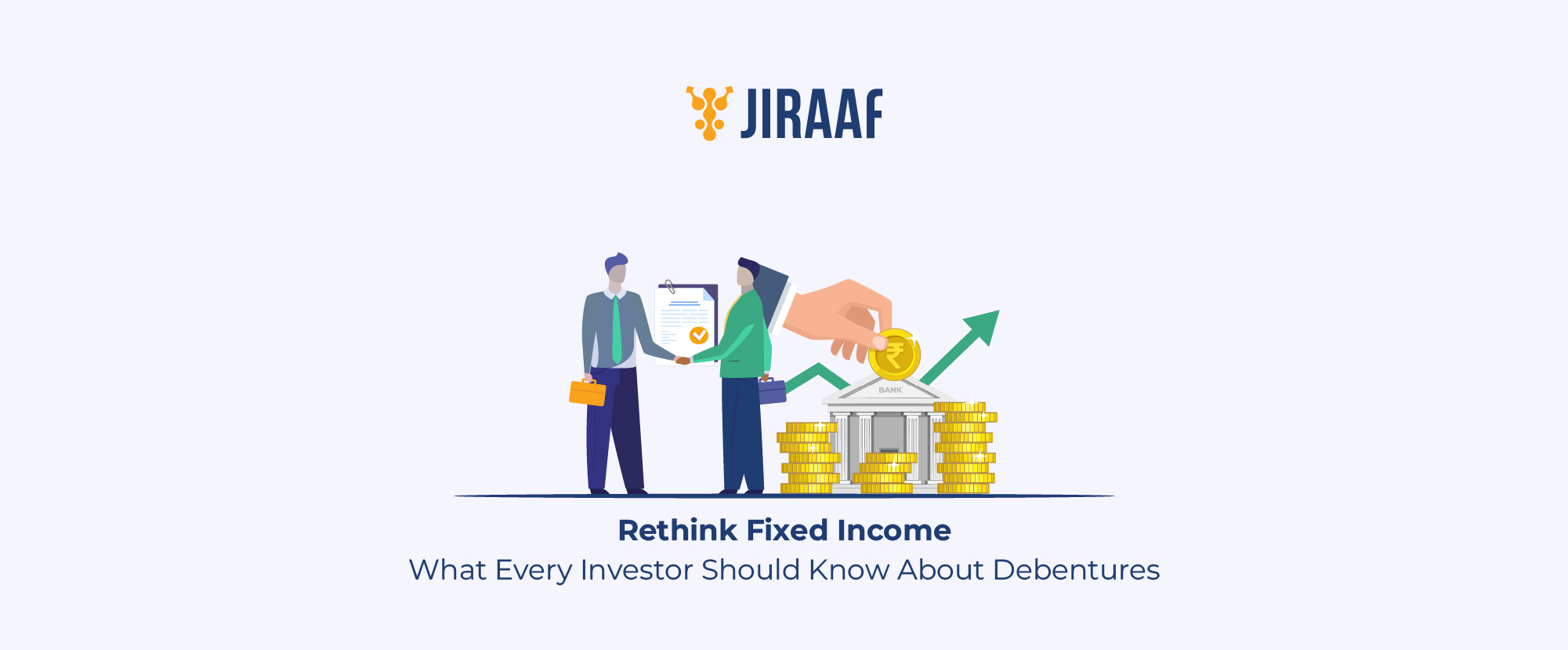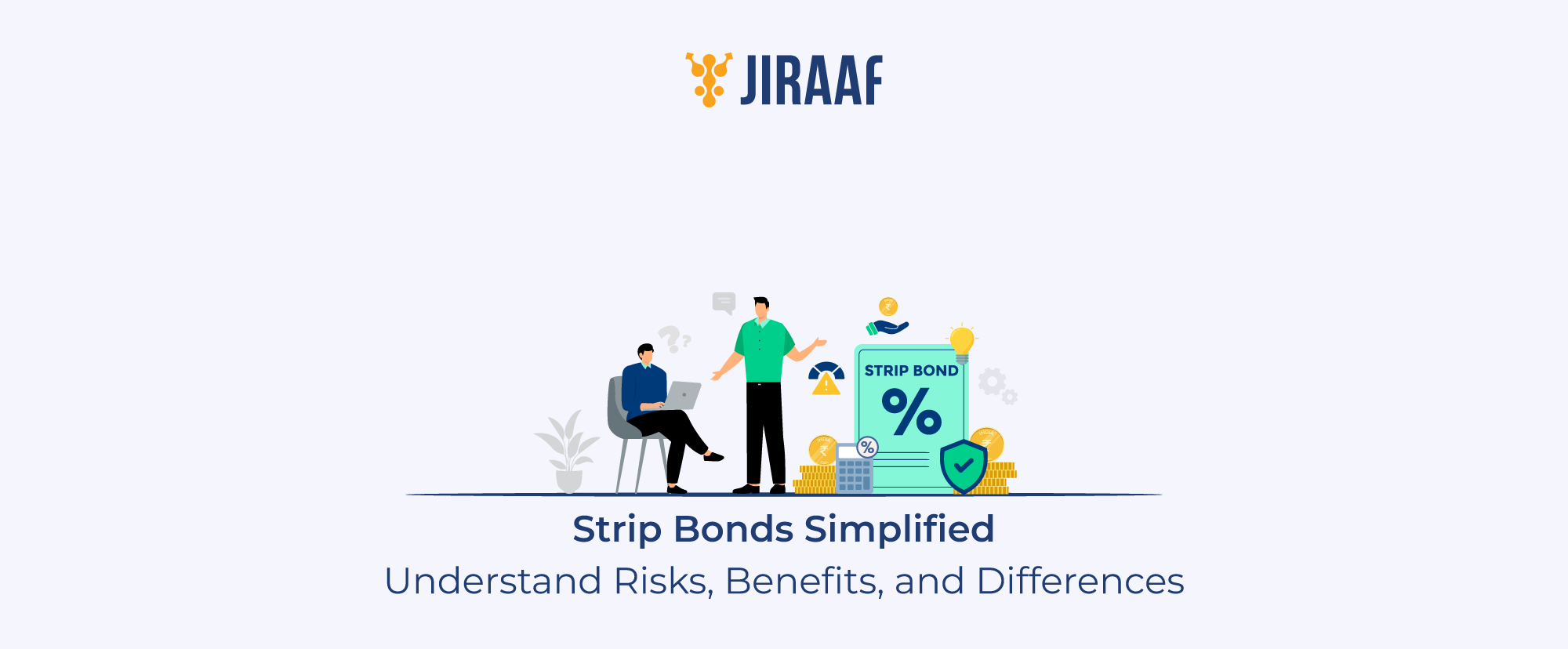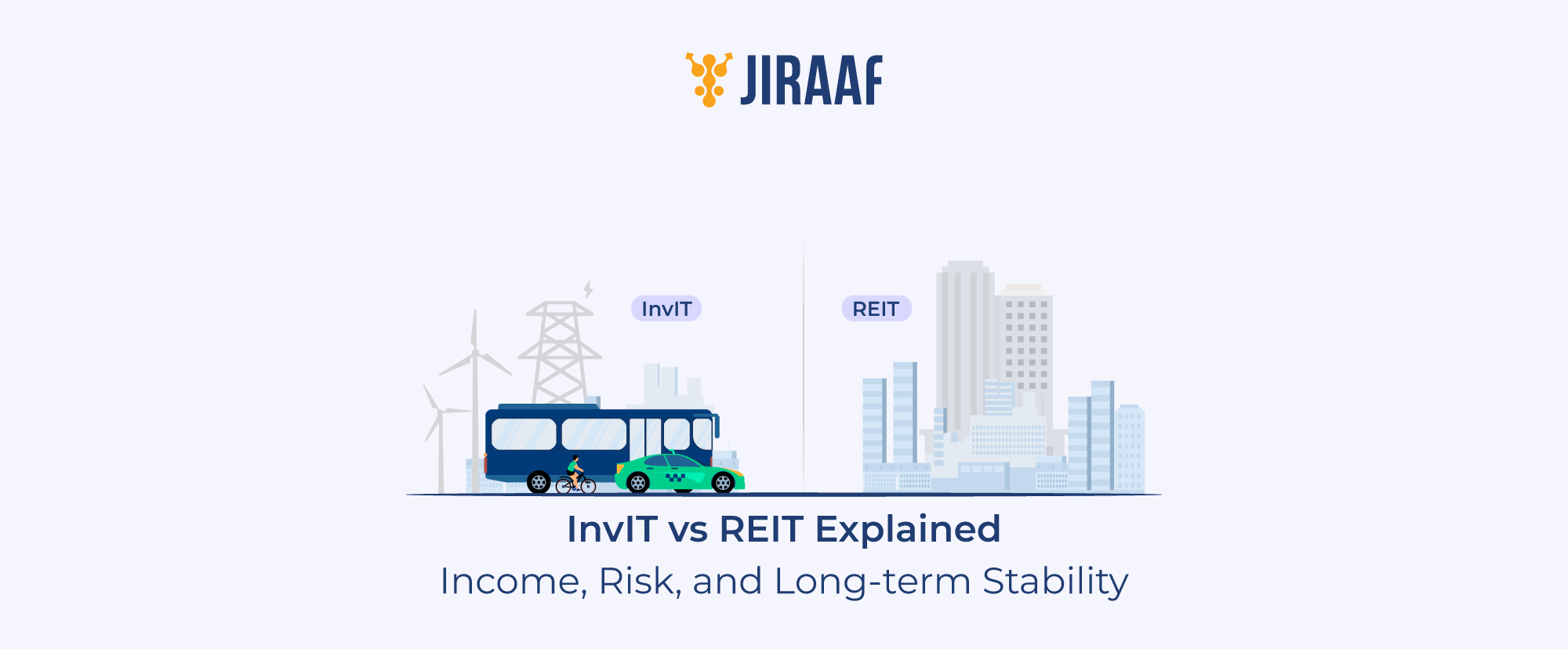Debentures are a way for companies to borrow money directly from the public instead of going through banks. Investors step in as lenders, providing funds that the business can use for growth, day-to-day operations, or refinancing old borrowings. Some debentures are backed by specific assets, while others rely only on the issuer’s reputation and credit strength.
For investors, the concept is straightforward. You lend your money, earn interest at regular intervals, and receive your principal back on the maturity date. The interest rate may be fixed or linked to market conditions, but the repayment schedule is set from the beginning. This certainty makes debentures attractive to anyone who wants a predictable income without the ups and downs of the stock market.
In this blog, we’ll break down what debentures are, the different types you’ll come across, their key features, and the pros and cons for both companies and investors.
What Is a Debenture?
A debenture is a type of debt instrument that companies issue to borrow money directly from investors. Instead of approaching a bank, the company raises funds from the public and, in return, promises to pay interest at agreed intervals and return the principal when the term ends. Some debentures are secured, backed by company assets, while others are unsecured, relying only on the issuer’s credit reputation.
For investors, debentures fall under the fixed-income category. That means predictable returns, similar in structure to a bank fixed deposit but often with the potential for higher interest rates. This makes them popular with those seeking a steady income without the ups and downs of equity markets. The trade-off, of course, is that, unlike deposits, debentures are not government-guaranteed, so choosing investment-grade issuers with good credibility is essential.
In India, companies frequently issue debentures to fund expansion, refinance older borrowings, or manage working capital. For investors, they serve as a middle ground offering more reward than deposits and more stability than stocks.
Now that we know what debentures are, the natural question is: how do they compare with bonds or bank loans? Let’s break that down next.
Debentures vs Bonds vs Loans
Debentures, bonds, and loans are all forms of borrowing, but they differ in structure, security, and how investors interact with them. Here’s a quick comparison:
| Feature | Debentures | Bonds | Loans |
| Collateral | Can be secured or unsecured | Usually asset-backed | Typically secured |
| Issuer | Companies (sometimes governments) | Governments and companies | Banks or financial institutions |
| Transferability | Often tradable in markets | Usually tradable | Not transferable |
| Documentation | Indenture (legal contract) | Bond certificate | Loan agreement |
| Repayment Terms | Flexible, tailored to issuer needs | Fixed maturity schedule | Custom terms, agreed with lender |
When a company needs money in a hurry, issuing debentures is often the quickest route. They can be issued faster than bonds, the terms are more flexible, and in some cases, no collateral is required. Bonds, on the other hand, follow a more rigid structure and usually come with stronger investor protection, especially government bonds, which come with a sovereign backing and thus are considered very safe.
Loans are the traditional option for businesses, but they involve higher documentation and scrutiny and the loan approval process can take longer. Once approved, loans cannot be prepaid or traded or exited fully until fully repaid.
From an investor’s angle, each has its own appeal. Debentures often promise better returns than bonds or fixed deposits, but that comes with added credit risk. Bonds lean toward safety and liquidity, making them a conservative choice. Loans, however, sit outside the picture for most retail investors, since they are private agreements between a borrower and a bank.
Now that we know how debentures compare with bonds and loans, the next step is to look at the different types of debentures available and what each of them means for investors.
Types of Debentures
Not every debenture works the same way. Some come with collateral, some don’t. A few can even be converted into equity shares, while others stick to a simple repayment schedule. Certain issues allow the company to repay early (call option), while others give investors the right to exit sooner (put option).
Understanding these variations helps both issuers and investors strike the right balance between risk, return, and flexibility.
Secured vs. Unsecured Debentures
Secured debentures are backed by specific company assets such as land, equipment, or project revenues. If the company defaults, these assets can be sold to pay investors. For example, Power Grid Corporation of India has issued secured debentures linked to earnings from its transmission network.
Unsecured debentures, on the other hand, don’t come with collateral. The company borrows purely on the strength of its reputation and balance sheet. Because the risk is higher, they usually pay more interest. Bajaj Finance, for instance, frequently issues unsecured non-convertible debentures (NCDs) and still attracts strong demand thanks to its solid credit record.
Convertible vs. Non-Convertible Debentures
Convertible debentures give investors the option to swap their debt for equity shares after a certain period. Companies like them because they can start with lower interest costs and leave room for equity conversion later. They’re common among firms with short-term funding needs but long-term growth ambitions.
Non-convertible debentures (NCDs) remain debt throughout their life. They don’t carry any equity upside, but they do provide predictable, fixed income. For many retail investors, NCDs are a straightforward alternative to fixed deposits, with the added benefit of potentially higher returns.
Redeemable vs. Irredeemable Debentures
Redeemable debentures come with a clear maturity date. Investors get their principal back when the term ends, along with regular interest payments during the tenure.
Irredeemable or perpetual debentures don’t come with a fixed maturity date. Investors receive interest for as long as the debenture remains outstanding, and the principal is repaid only if the issuer chooses to redeem it. In India, companies cannot issue such instruments under current law, but banks and financial institutions sometimes offer perpetual bonds that serve a similar purpose.
Registered vs. Bearer Debentures
With registered debentures, the investor’s name is recorded in the company’s books. Transferring ownership requires paperwork and approvals, which makes them slower to trade but more secure.
Bearer debentures worked like currency — whoever held the certificate was considered the owner. While convenient, they created fraud and tracking risks. As a result, bearer debentures are no longer legal in India.
Callable vs. Non-Callable Debentures
Callable debentures allow the company to repay early. If market interest rates fall, issuers may call back the debt and re-borrow at cheaper rates. While that benefits the company, investors lose out on future interest.
Non-callable debentures lock in the terms for the full tenure. For investors, this means greater certainty about income and maturity, making them a favorite among conservative buyers.
With so many variations, it’s easy to see why debentures don’t come in a one-size-fits-all format. But no matter the type, there are a few core features every investor should check before putting in money. That’s where we go next.
Key Features of Debentures
Debentures share some common traits that help investors judge their suitability. Here are the main ones:
- Maturity: Most debentures in India have a tenure of 1 to 10 years, though infrastructure-related issues may run longer.
- Interest Rate: Coupons can be fixed or floating, generally ranging between 6% and 10% depending on the issuer’s credit rating and market conditions. Secured debentures usually offer slightly lower rates than unsecured ones because the risk is lower.
- Indenture: A legal contract that spells out the terms — interest, tenure, investor protections, and repayment triggers. This document is the backbone of any issue.
- Credit Rating: Agencies like CRISIL, ICRA, and CARE assess each debenture issue for creditworthiness and quality. Higher ratings suggest lower risk, while lower-rated issues typically need to offer higher returns to attract investors.
- Listing: Many debentures are listed on exchanges such as NSE or BSE. This gives investors the option to sell before maturity, though liquidity can vary. Even if trading volumes are thin, a listed security offers more transparency than an unlisted one.
Once you know the features, the next big question is how debentures actually compare with other investment choices, and whether they deserve a place in your portfolio. We’ll explore that in the upcoming section.
How Debentures Are Issued
Understanding the issue of debentures involves knowing the sequence that companies follow to raise funds through this instrument. This applies to both secured and unsecured debentures, although secured issues require details of the pledged assets to be included in the trust deed. It starts with internal approvals and ends at allotment and listing.
Step-by-step Process For New Debenture Issues
The process of issuing debentures is structured but fairly straightforward. Here’s how it typically works:
- Board Approval: The company’s board approves raising funds through debentures and defines broad terms like amount, tenure, and type (secured/unsecured, convertible/non-convertible).
- Trust Deed & Trustee: A trust deed is drafted, outlining investor protections, repayment terms, and collateral (if secured). A trustee is appointed to safeguard investor interests.
- Credit Rating: For public issues, a rating from SEBI-registered agencies like CRISIL or ICRA is mandatory. Even for private placements, issuers often get ratings to attract investors.
- Registrar & Transfer Agent (RTA): An RTA is appointed to manage records, compliance, and allotments.
- Mode of Issue: Debentures can be issued either:
- Private Placement – Offered to a limited group of institutional or high-net-worth investors. These can still be listed on exchanges for transparency and potential trading, though liquidity is usually lower.
- Public Issue – Open to retail and institutional investors. These are mandatorily listed on exchanges like NSE or BSE for trading access.
- Private Placement – Offered to a limited group of institutional or high-net-worth investors. These can still be listed on exchanges for transparency and potential trading, though liquidity is usually lower.
- Offer Process: For public issues, companies may use book-building or a shelf prospectus if they plan multiple tranches.
- Allotment & Listing: After the issue closes, debentures are allotted and credited to investors’ demat accounts. If listed, they begin trading on the exchange.
With the process clear, the natural question is—how do debentures stack up against shares, another common way companies raise money?
Debentures vs Shares
Debentures are designed for stability. Investors know when and how much interest they will earn, and when their money will be returned. Shares, on the other hand, represent ownership. They can offer growth through dividends and rising prices, but also carry higher uncertainty since their value depends on market performance.
| Feature | Debentures | Shares |
| Company Ownership | No (debenture holders are debtors to the company) | Yes |
| Returns | Fixed interest | Dividends + capital gains |
| Voting Rights | None | Yes |
| Repayment | At maturity | No fixed repayment |
| Risk | Lower (senior claim, asset-backed in some cases) | Higher (residual claim, market-linked returns) |
The difference becomes clearer when we step into the shoes of issuers and investors. That’s where the advantages of debentures start to shine.
Advantages of Debentures
For companies, debentures help raise long-term money without handing over control. There’s no dilution of equity, no need for complex negotiations, and fewer bank-style restrictions. Since interest paid on debentures counts as a business expense, it also reduces the company’s taxable income.
What makes debentures particularly useful is the flexibility; they can be secured or unsecured, convertible or not, depending on the company’s goals and market conditions. Issuers can plan repayment schedules that work for them while keeping their capital structure in check.
For investors, the appeal is straightforward: a fixed interest payout over a set period, and clarity on when their money will be returned. Debentures suit those looking to lock in steady income, whether for retirement, tax planning, or general risk management.
If the company runs into trouble, debenture holders get repaid before shareholders. Some debentures also trade on stock exchanges, offering investors a way out before maturity. And if the instrument is convertible, there’s the added chance of benefiting from future share price growth.
In short, when market conditions are uncertain or when equity markets are too volatile, debentures help both sides meet in the middle, offering structure without complication.
Still, every coin has two sides. Debentures also come with certain drawbacks that both issuers and investors need to weigh carefully.
Disadvantages of Debentures
For companies, debentures are a commitment they can’t dodge. Interest has to be paid on time, and the principal has to be returned when it’s due, no matter how the business is performing.
In a slow market or during a cash crunch, those obligations can pinch. If the company’s credit rating isn’t strong, it may have to offer a higher interest rate to attract buyers, which pushes up borrowing costs.
For investors, debentures don’t give an ownership stake or any say in how the company is run. There’s also no chance of dividend payouts like shareholders might get. And while default risk is lower than with equity, it isn’t zero. Some debentures don’t trade actively on exchanges, which can make it harder to exit early. Fixed returns also mean inflation can eat into real earnings over time.
Choosing the right debenture comes down to checking the basics: who’s issuing it, what the rating says, how easy it is to sell, and whether the maturity and returns fit your plans.
Conclusion
At its core, what a debenture is hasn’t changed in decades. It’s a straightforward arrangement: an issuer borrows from the public on agreed terms, and investors get interest along the way plus their capital back at the end. That’s the debenture’s meaning for most people—clarity and predictability.
For companies, they remain one of the cleanest ways to raise long-term funds without handing over ownership. If they want to reassure investors, they can issue secured debentures backed by assets. If they have a strong credit profile, they can go unsecured and still find buyers. The format adapts to their needs.
For investors, the value is in knowing precisely what they’re signing up for. You know your return, you know your repayment date, and in many cases, you have the option to sell in the market before maturity. In an environment where equity prices can swing sharply, that stability is worth holding on to.
Debentures have lasted through booms, slowdowns, and policy shifts because they serve both sides. Issuers get capital on their terms, and investors get a steady, contractual income. That balance is why they’re still relevant, and why they’ll likely remain a fixture in India’s capital market for years to come.









